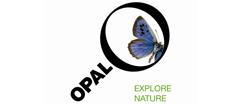Year 4: Living things and their habitats
This list consists of lesson plans, activities and video clips to support the teaching of All Living Things at Year Four. It contains tips on using the resources, suggestions for further use and background subject knowledge. Possible misconceptions are highlighted so that teachers may plan lessons to facilitate correct conceptual understanding. Designed to support the new curriculum programme of study it aims to cover many of the requirements for knowledge and understanding and working scientifically. The statutory requirements are that children are taught to:
• recognise that living things can be grouped in a variety of ways
• explore and use classification keys to help group, identify and name a variety of living things in their local and wider environment
• recognise that environments can change and that this can sometimes pose dangers to living things.
Visit the primary science webpage to access all lists: www.nationalstemcentre.org.uk/primaryscience
BBC Bitesize Food Chains and Habitats
Class clips and guides on food chains and habitats
Real Bugs
Using the outdoors is always a great way of getting children excited about learning. Hunt for small invertebrates in the school grounds or local environment. Soft, dry paintbrushes and small petrie dishes are great for collecting smaller creatures from leaves or under logs, or get the pooters out, they are probably hiding in your resource room! Allow children to work scientifically collecting and observing minibeasts, including looking at mouthparts and feeding. This topic could link creatively to art and literacy by making models of minibeasts, shadow puppets and performing a 'bug play'.
There are excellent electron micrographs of insect mouthparts, which children could group according to how they think a minibeast feeds. This activity is detailed from page 11.
Animal Classification
A Key Stage Three resource which can be used at Key Stage Two to classify animals. Children find classification difficult and need first to practise sorting and grouping animals in different ways which will help them see the basis from which scientists classify animals. Let children work in small groups with sets of cards showing a variety of animals and ask them to sort them in a variety of ways. They will naturally sort them into groups such as: large and small animals, those that live on land, air sea, the number of legs they have, if they have fur, feathers, scales. These groupings will help children see how scientists use similarities and differences as a basis for organising animals. They may then sort them into the major groups.
Tree Identification Key
Trees are plants, though children may still think of a plant as being much smaller and growing in a pot, so why not identify trees? Go on a nature walk if you have a nearby wooded area and collect leaves, (if it's Autumn) or take photographs of trees, then use this key to help identify them. Children could then go on to create their own keys to identify the tree from which the leaf has fallen.
Newly Discovered Species (Age 7 to 11)
Children often think that there are no new species and that we know all the animals on Earth. This resource helps them see that new species are still being discovered and could lead on to researching other newly discovered species. Identifying the nine newly discovered amphibian species using a simple dichotomous key shows them that keys are a useful scientific tool, whilst showing them how keys work. This could lead onto then having a go at creating their own classification keys by identifying key features that differentiate species. A good idea is to start with 4 animals and increase the number when children feel more confident with this.
National SEA LIFE Centre: Key Stage Two Resources *suitable for home teaching*
Looking at plants and animals in different habitats helps children explore the diversity of life on the planet. Use the key on page 10 to look at the observable features of creatures found in the sea and identify them. The classification game, on page 8 of the pupil worksheet, is a fun way for children to identify animals by asking questions about them. It helps children see how animals are classified.
WWF website
Learn about endangered and threatened species around the World. Children could further the animals and look at threats to their habitats.
Look at a World map and choose an animal from a particular continent, which is endangered. These sheets could be used as a basis of researching different animals looking at adaptations, habitats or reasons why they are endangered.
Water Survey - What Creatures Are Lurking in Your Pond?
Children may think that any change to the environment has a negative impact whereas it may offer an opportunity for another species. Try this pond dipping activity to gather plants and small animals and then to identify them using the helpful guides. The water quality of the pond may be assessed from the presence of certain plants and animals. This activity is great for showing children that identifying plants and animals is a useful activity which can tell us more about the environment. It also helps them to recognise that environments can change and this sometimes poses a threat to living things. As the water quality changes some species may decrease whereas other species which are more tolerant to polluted water will increase.
Save our home!
What is the common link between chocolate biscuits and orangutans? Find out by looking at rainforests in Sumatra and how deforestation has occurred in order to grow oil palm plantations and how this has affected orangutans. They name oils found in different foods and think about where they come from, then identify foods that contain palm oil. They also consider the effect of so much palm oil in the foods readily available to us.
Bee detectives
This resource looks at the importance of bees as pollinators and explores some of the threats they face. The activities are based around the work of ‘real world’ scientists in organisations such as Fera. Activities include:
- Pollination roleplay
- Finding out what's killing our bees?
- Find out the job of a scientist at the Bee Unit in Fera, where observing and classifying are key skills used in identifying insect pests.
- Children sort themselves, objects and insects into various groups based on different criteria.
Biofilms
This video and accompanying booklet provides an unusual example of a food web in a river habitat with bacteria in bioflims being the producers. It then goes onto look at how overuse of fertiliser and sewage can harm a river and how bioflim bacteria can help to keep the river healthy. Finally, it looks at the impact of over use of antibiotics on the biofilm bacteria and the river. The booklet supports the video, but also describes how microbiologists measure the health of a river by taking samples and then studying them back in the laboratory.
Farming Tales
Children can explore the importance of producers, food chains and key species through the real world context of farming.
Superpillars Assemble - Butterflies, moths and their habitats
In this collection of resources, pupils will learn about moths and butterflies and their habitats. They will learn about the important role that butterflies and moths have in food chains, and how different animals in the food chain are dependent on each other to survive. Through a dance activity they will find out about the different ways that habitats can be changed by humans, and understand how these habitat changes can pose dangers to butterflies and moths, and have a knock-on effect on other animals in the food chain.
Human Impact - Saving Today's Dinosaurs
This series of sessions including activities, presentations and videos looks at the impact on birds, "today's dinosaurs" of habitat loss, water pollution, and light and noise pollution.










